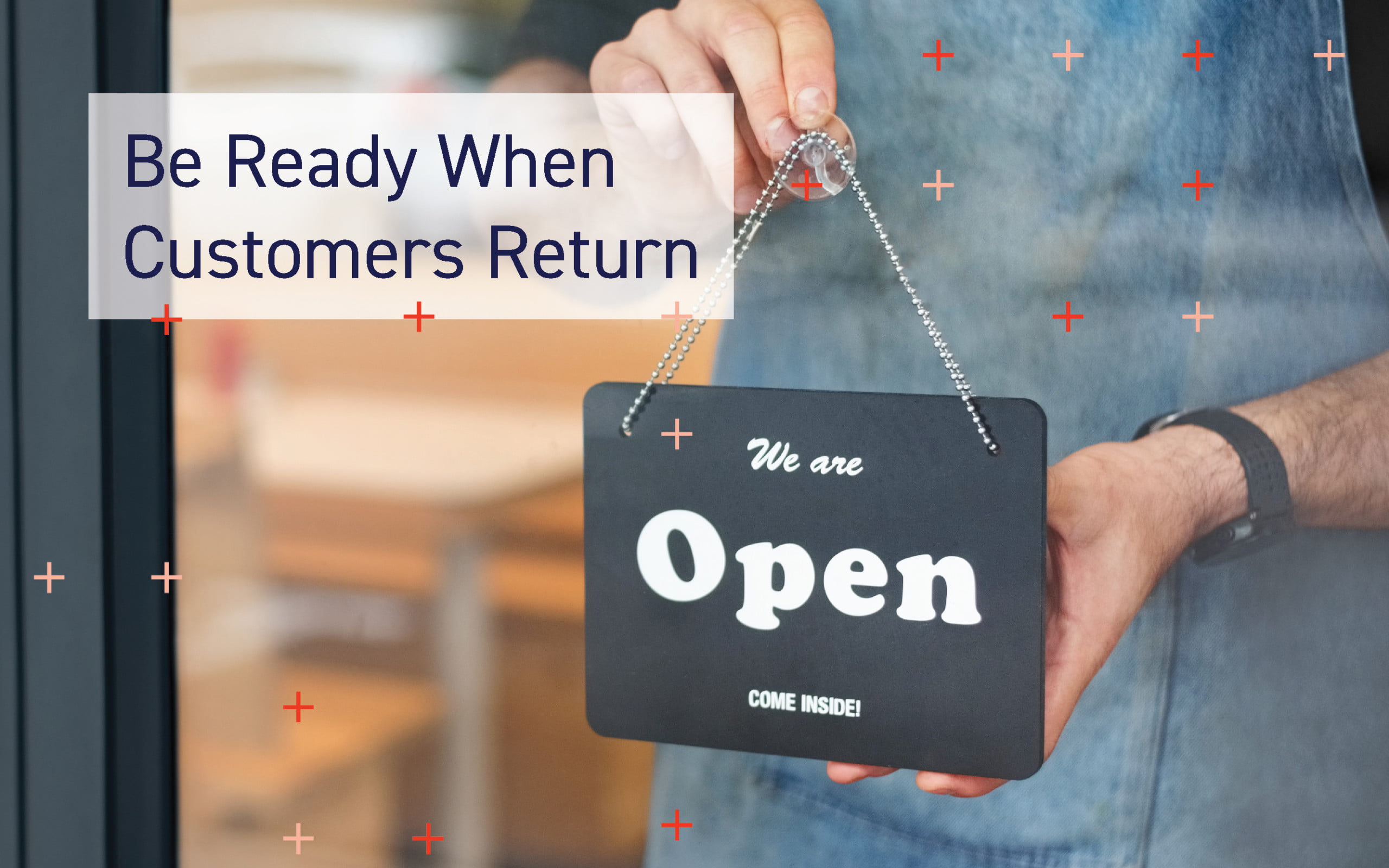Summary
As I write this, we are still in the middle of the pandemic. Thankfully, recent numbers from NPR are starting to spark hope — hope that coronavirus-related deaths are on the decline, hope that infected cases are declining, hope that the curve is finally flattening, and hope that we’re closer to resuming our day-to-day routines.
For restaurant owners, though, it’s not just a matter of unlocking the doors and firing up the grills. To ensure that the comeback is greater than the setback, here are a few marketing strategies that restaurant owners can use:
Focus on your employees first.
The COVID-19 fallout forced many restaurants to furlough or outright lay off their staff members. But with stay-at-home orders anticipated to lift soon, according to Forbes, eateries are now tasked with staffing up and coaching those new hires to hit the ground running.
Once all the positions are filled, train any new or returning hires on any updated health guidelines and cleaning procedures — particularly for anyone who handles food or interacts with guests.
From quick-service restaurants (QSR) to fine dining options, having a knowledgeable and prepared staff is one of many effective marketing strategies for restaurants. It’s a way to enhance the dining experience and increase sales to help the business recover faster.
Assess your menu and leverage your strengths.
Take this time to identify what your restaurant does well and, if applicable, what meals drove your off-premise sales during the pandemic. You could double down on those offerings — or add varieties of that specific dish — to keep your guests coming back. Furthermore, show your team how to upsell guests with appetizers, drinks, and desserts.
You may also want to consider your approach to dayparts. Before the pandemic, 2020 was declared the year of the breakfast wars by Restaurant Dive due to it being the only industry daypart experiencing growth. If your operations can support it, you might consider offering breakfast items. Create this new menu using food supplies you already have on hand (e.g., chicken) to spice up the menu without sacrificing profitability.
Finally, while it’s hard to imagine any immediate amendments to local liquor laws, your future growth plans should include pairing alcohol with your dinner offerings. This not only brings in incremental sales opportunities, but it also positions restaurants to negotiate with suppliers for funded advertising campaigns featuring product placements.
All restaurant marketing strategies should include looking at the menu and seeing what has moved the needle in the past. Assess profit, daypart, and alcohol to discover what each can add to your offerings in the future.
Learn from the past two months.
Now is a great time to review your business model. Nobody could have predicted a global pandemic that crippled the economy, but the brands with the most solid business models were ahead of the curve.
Off-premise dining was already on the rise, as Technomic’s Generational Consumer Trend Report found that more than two-thirds of meals were eaten at home even before the pandemic. Plus, online ordering platforms continue to be an effective digital marketing strategy for restaurants trying to spark growth (says Upserve) and increase their customer databases.
Be prepared to cater your services, menu, and digital ordering platforms to the reality that guests won’t always choose to dine in. For any upscale brands worried that takeout will compromise food quality too much, your on-premise experience must shine to make it harder for customers to ignore.
Once your business model is ready to launch, prepare for some stiff competition from grocery stores. Traditionally seen as a secondary threat to restaurants, FSR reports grocers have absorbed the majority of restaurant traffic during this pandemic. One of the must-have restaurant marketing strategies that eateries need to deploy is finding a way to lure these guests back. The pendulum of food consumption will gradually swing back away from grocers, but no one is certain how long that will take. In the meantime, be prepared to promote incentives that will engage your customers and win back market share.
Start planning your marketing NOW.
I firmly believe in this adage: When times are good, you should advertise. When times are bad, you MUST advertise. When you think about the good times, your restaurant marketing strategies need to be planned and effective.
Consider adopting a multifaceted approach focused on both current and potential guests. If you are not already doing it, start engaging guests who continue to visit during the pandemic by thanking them and using “bounce back” offers that will entice future visits. For new customers, plan a broader acquisition marketing campaign that potentially expands your trade area and media tactics while targeting people who haven’t visited since the pandemic started. Now is also a great time to craft a social media strategy. Leverage these platforms to connect with your community by highlighting any charitable actions taken during the pandemic or simply extending the reach of your incentives available in other tactics.
In our “Tempting the Dynamic Restaurant Consumer” research, we found that 54% of consumers will try a new restaurant because of a BOGO or new item/limited-time offer. Coupons should also be a part of every acquisition strategy. Once the pandemic has ended, consumer behavior will change as people continue to place a heavy emphasis on value. If your goal is to acquire new customers, coupons are a proven way to communicate that value to potential guests.
For our data-savvy owners, use your customer relationship management (CRM) platform to craft personalized messages for your existing customer base. In communities where you do not have much customer penetration, deploy your acquisition strategies and be sure to measure the campaign results.
It’s time to start planning your great comeback. While it won’t be as easy as just turning everything back on, you can get started by ensuring that your employees and operations are ready to move the business forward as we enter the summer months. Effective marketing strategies for restaurants will need to drive new and incremental guest visits with creative menu offerings and incentives that entice experimentation and increase check totals. Remembering these essentials can help ensure that your comeback easily outshines any temporary setback.
For additional insights, you may also want to visit our COVID-19 marketing and advertising information page.



